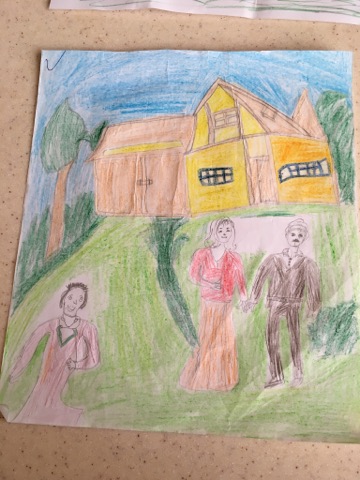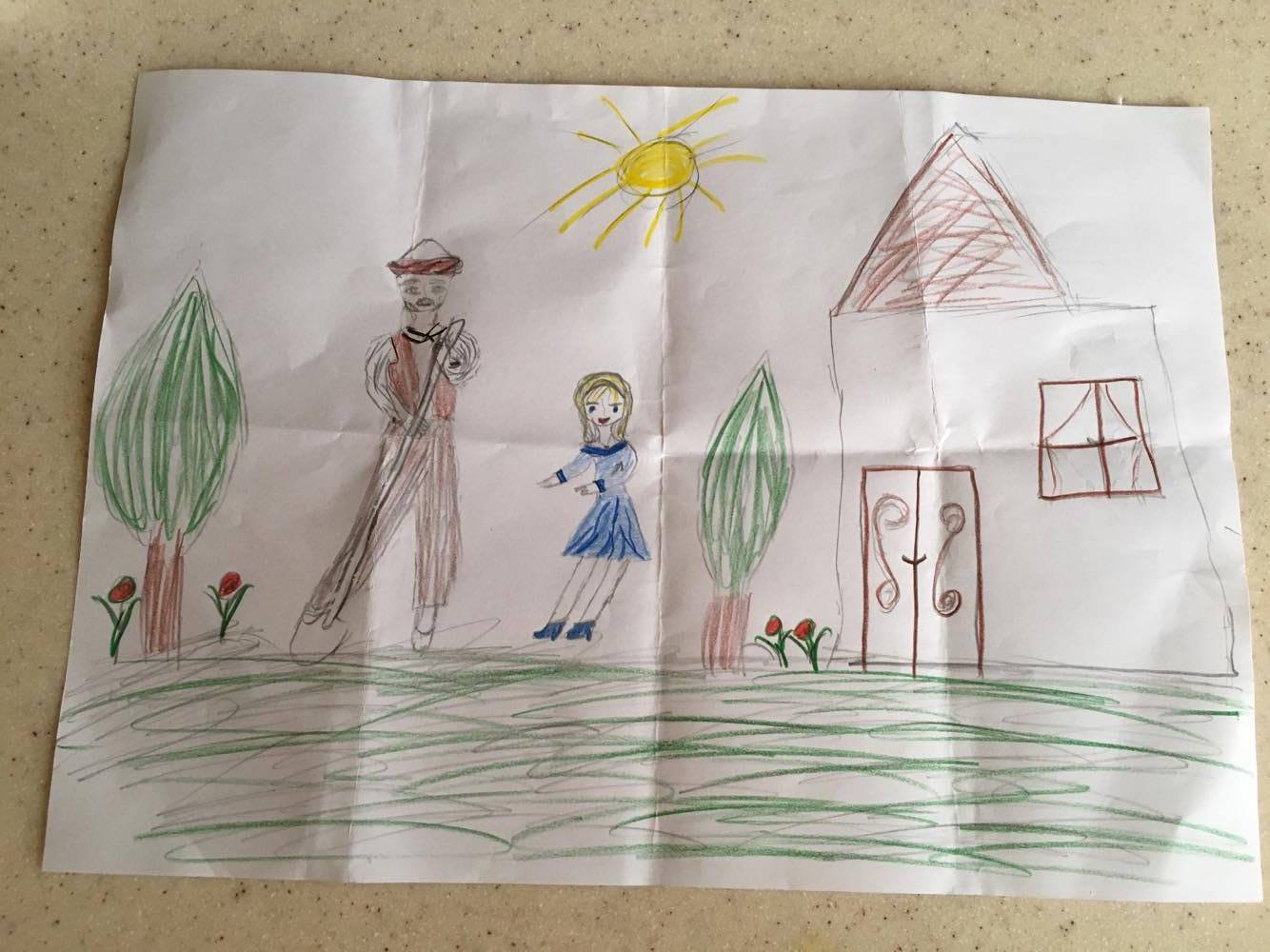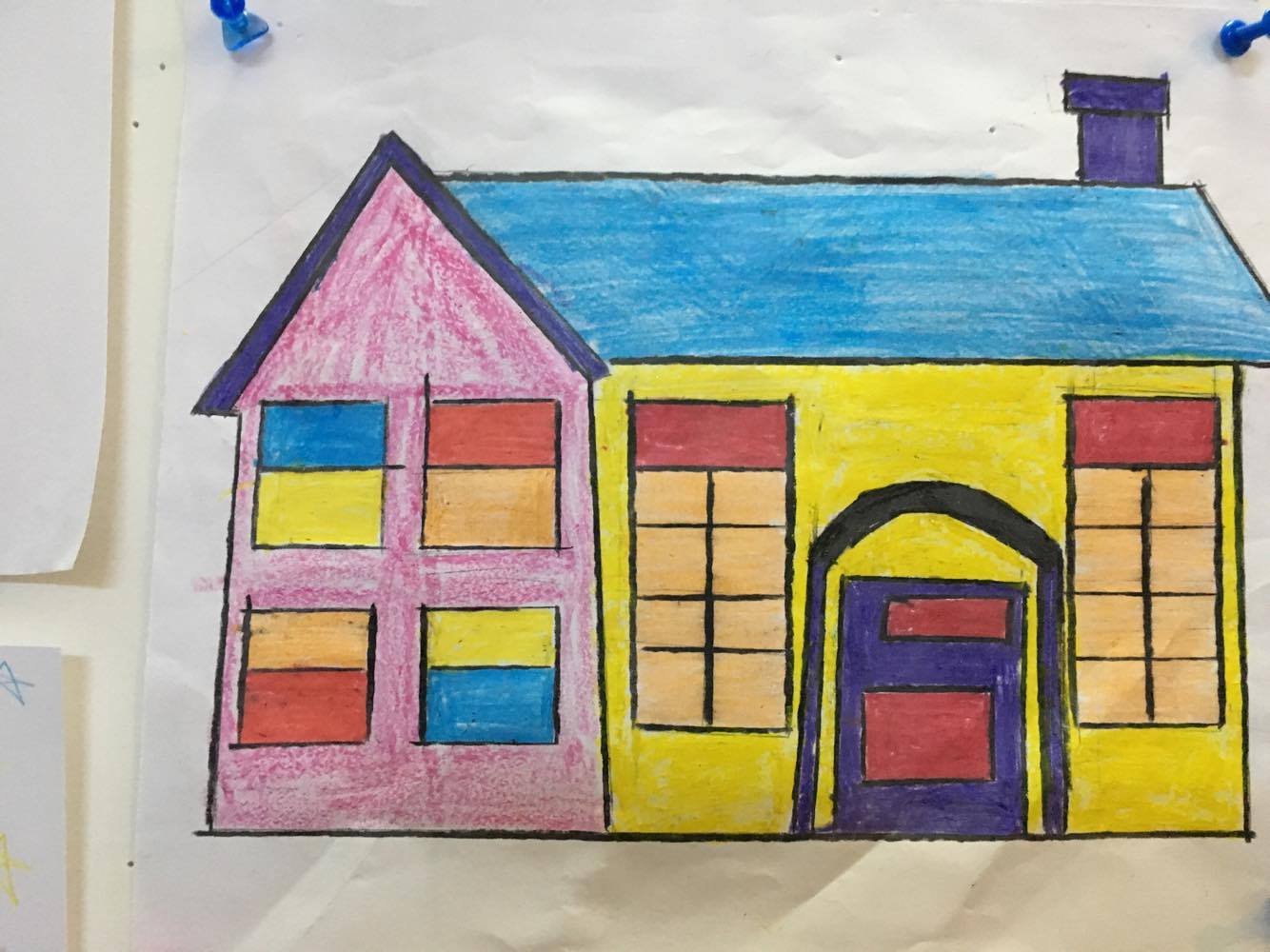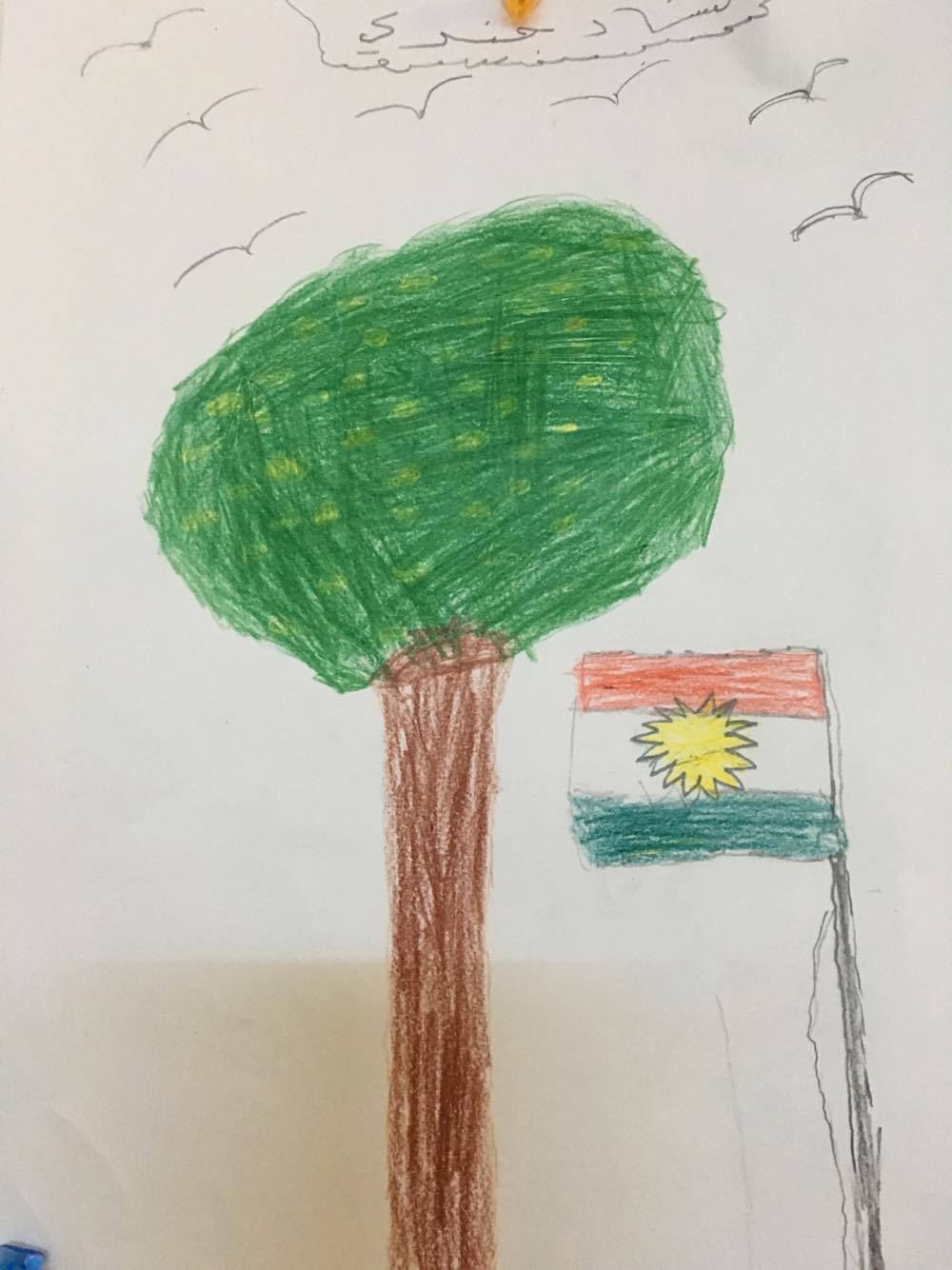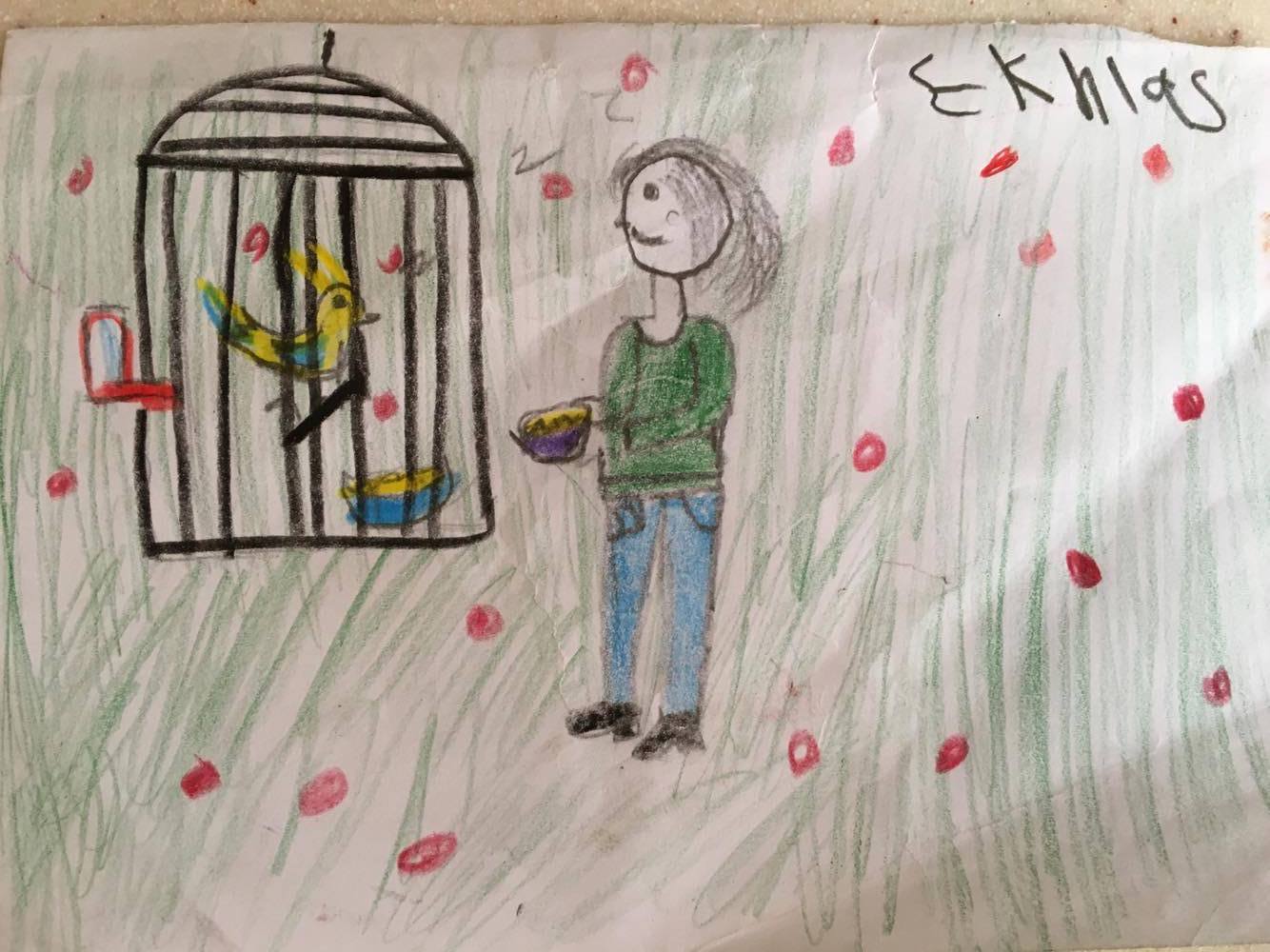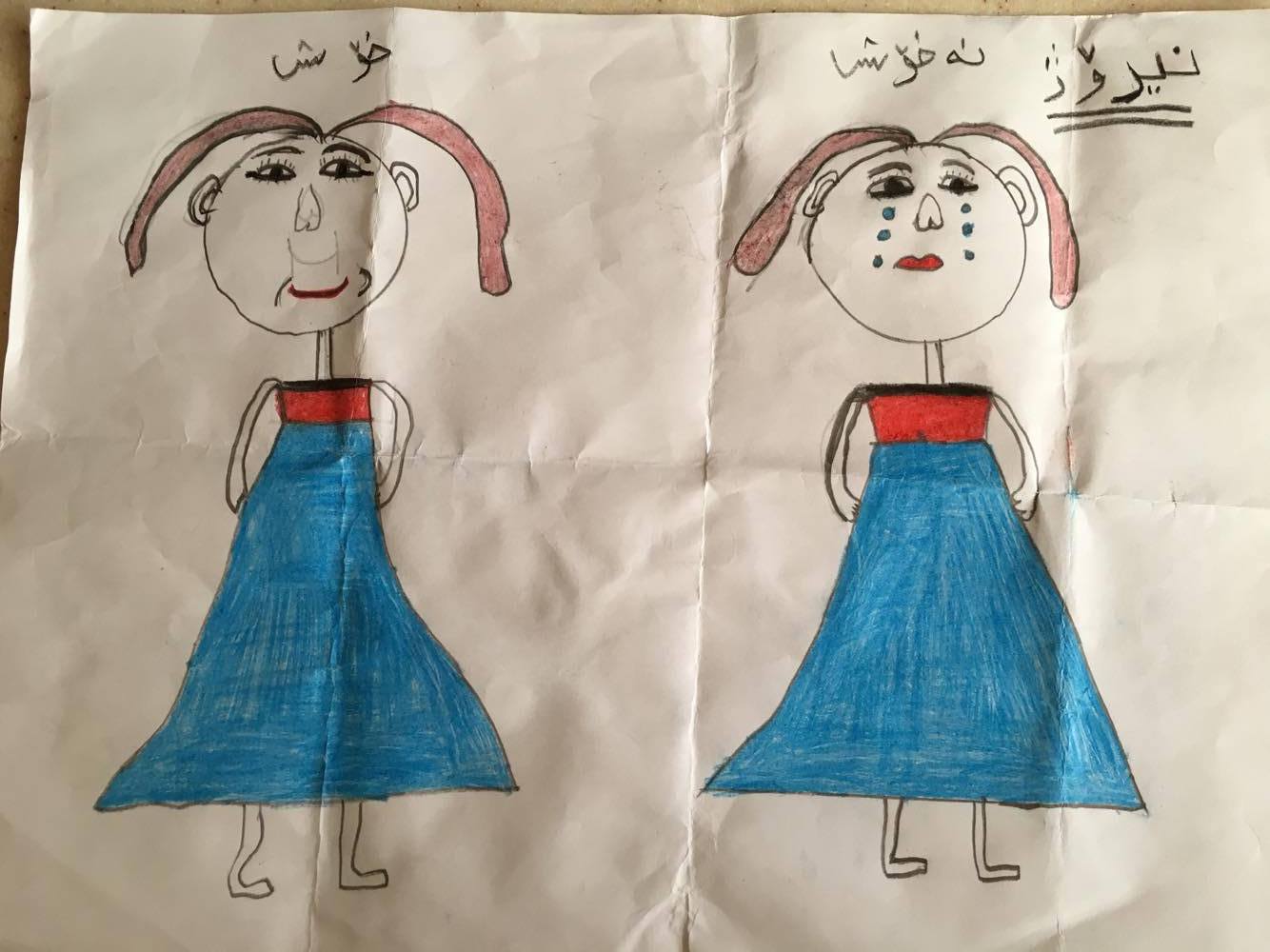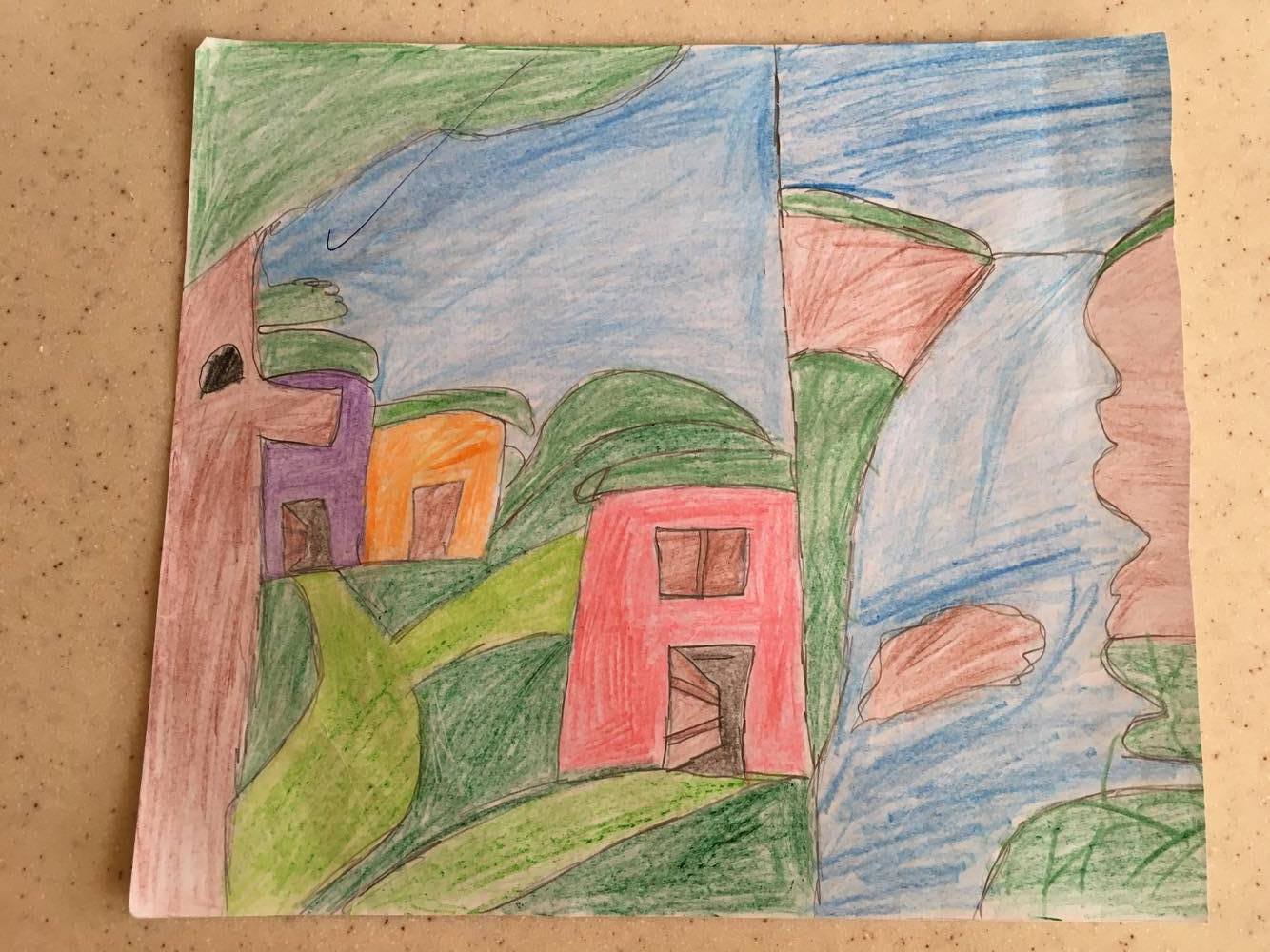Susannah with two students in art class
Although I did research prior to my trip and had attempted to prepare myself for what I would experience, it turned out to be an unimaginable journey which took me by surprise in the best of ways.
A message of hope in the camp
On the first day in Dohuk, we visited the Greater Change Community Center in the IDP camp outside of the city. When driving into the camp, I was overwhelmed by what I was seeing. The camp, which hosts more than 13,000 individuals, consisted of thousands of tents, lined up in rows with occasional buildings from a variety of organizations. Children walked the roads between the rows of tents and watched us as we drove by. Some of the tents appeared to be markets, selling fruits and vegetables, snacks, packs of water, and sodas, etc.
Upon arriving at the community center, we found an empty and very quiet playground surrounded by several buildings. I was initially surprised at how quiet it was, until about a half a dozen doors opened and children aged six to sixteen flooded the playground for recess. Teachers came out as well to supervise the children. The children were incredibly happy and kind, and they were very interested in the two young women visiting their center.
Over the weekend, I was able to explore some of the most beautiful places I have seen. One experience which especially struck me was our visit to Amadiya, a city located on top of a lush mountain, which allowed for impeccable view. We stopped by a man outside of his home to ask him directions to a spot where we could take in the view, and without skipping a beat he invited us into his home and to his backyard, which essentially was a garden with fig trees and vegetables and, once we had made our way to the back, had a breathtaking view of our surroundings. His wife came out with teas and water, and encouraged us to pick the figs in their garden to eat. I had never received this kind of warm hospitality from complete strangers.
Susannah teaches infant first aid
Once the week began at the Greater Change Community Center, I found myself anxious to teach classes. While I did have a translator, my topic of education for the first couple of days was women’s health, which made the translation process a little more difficult. Additionally, there were cultural barriers to the learning process. For some of the students, the topics that were covered had much more controversy in their culture than they had in our culture. However, as time went on, we were able to find a balance between the two cultures, and the girls opened up and asked many questions pertinent to women’s health. They seemed to be excited to learn, and the next day they showed up with more friends for the class.
Although the language barrier definitely made it more of a challenge, both I and the translator were able to adapt in order to make it easier for us and the students to learn. Throughout my stay in Iraq, I taught classes on women’s health (with a focus on menstruation, nutrition and exercise, mental health, sexual health and childcare). Because of the lack of educational resources in the camp, there was a definite educational gap when it came to women’s health and child care. I had the women write down topics they wished to be covered and taught those about those topics the days following.
Additionally, I taught a CPR class as well as art classes for the children. I had a positive experience in both of these classes. In the art class, I had the children create self portraits for what they wanted to be when they were adults. We had many doctors, soccer players, and singers. At one point, I had a group of teenage girls come up to me, wanting to know how to take blood pressure and pulse, as well as listen to lung and heart sounds. All three of them wanted to either become doctors or nurses, and it was inspiring to see them so interested in healthcare, especially as they lived in a country where there is a demand for healthcare workers.
My trip to Amadiya summarized Iraq for me. In the news we see a desert land filled with abandoned villages which have been wrecked, and a population of people who have been completely traumatized by violence. However, when I arrived in Iraq I was able to see that it was so much different that what my expectations had been. While it was true that there were security checkpoints and areas which had been ruined by war, IDP camps for individuals who had been forced to leave their homes, an increased medical demand and decreased resources in Iraq, there was also more beauty, not just in the land or the culture, but in the people especially. In Iraq, I experienced more love from this country than I could have believed possible.
View from Amadiya










